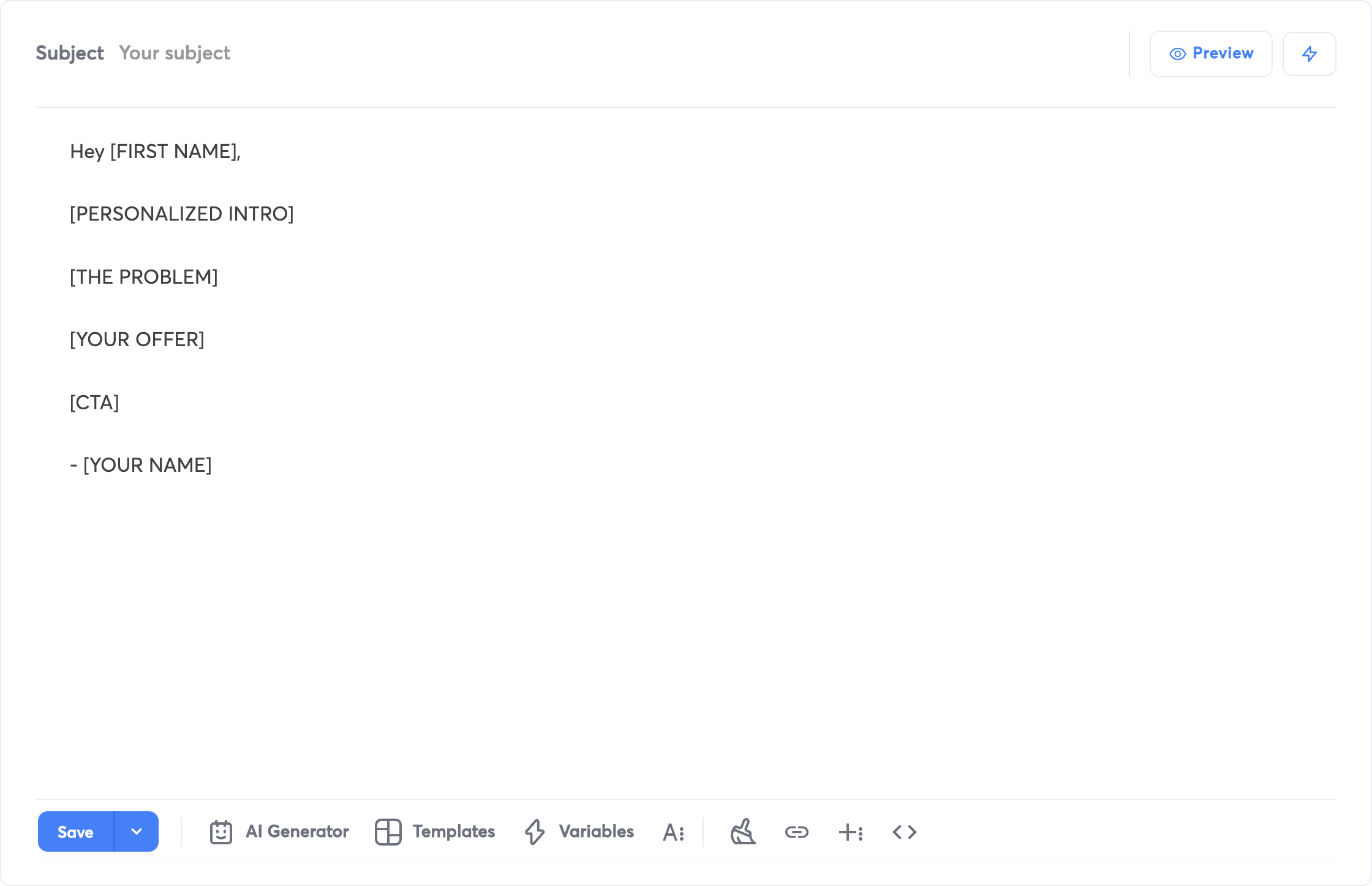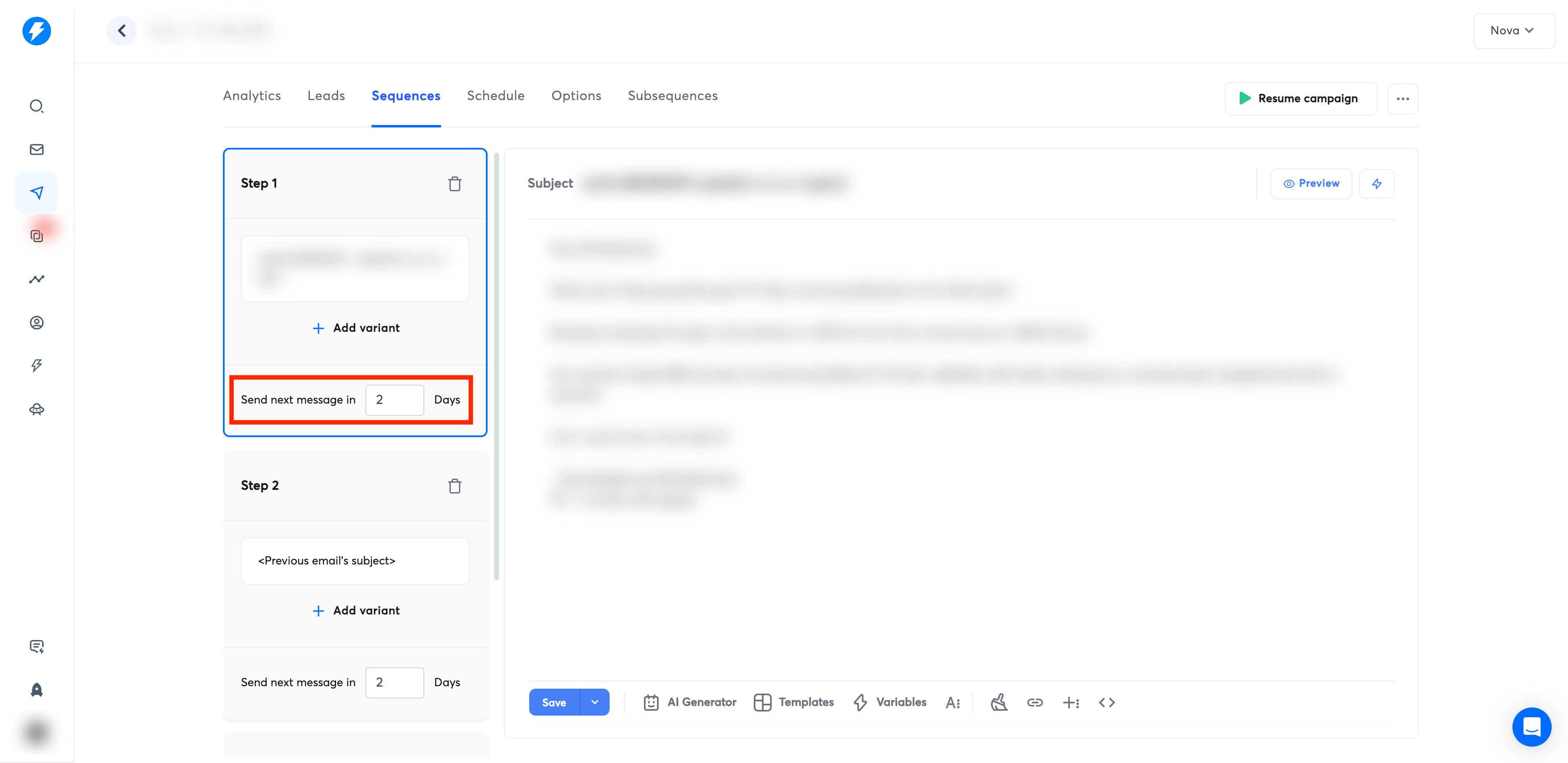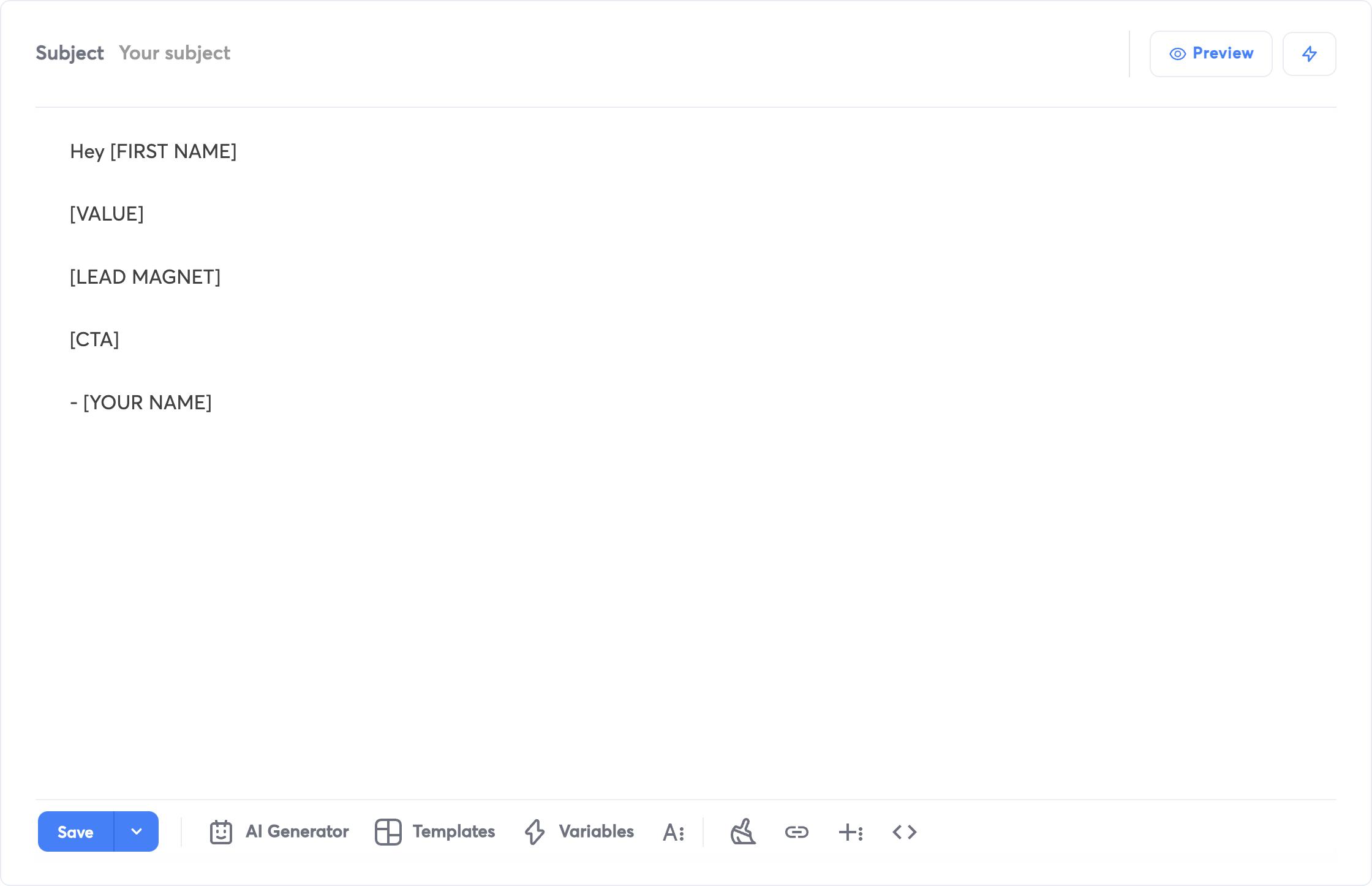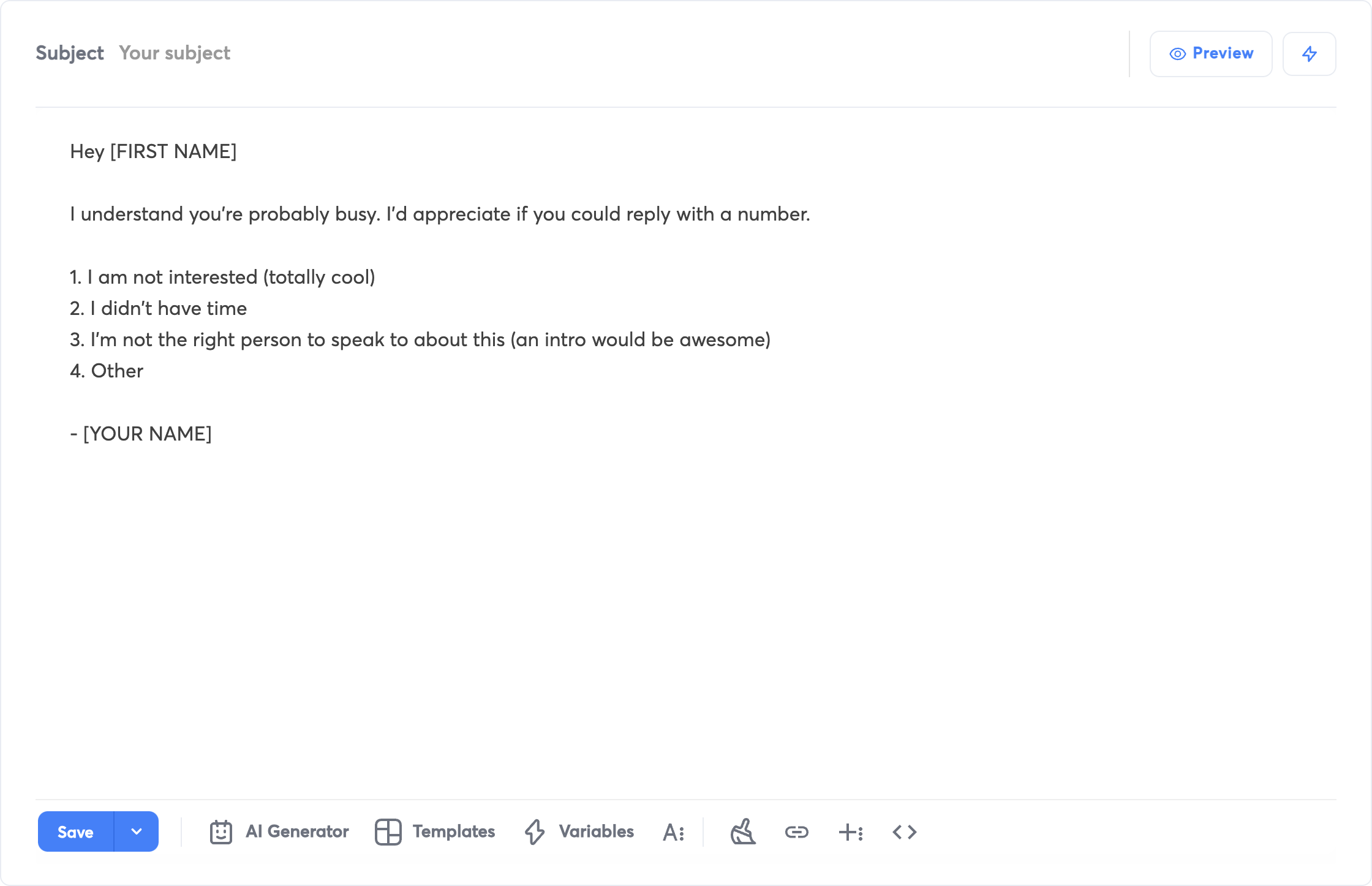Sequences
A sequence is an automated set of emails we will send leads in our campaign. Sequences let us send cold emails at scale.
It consists of:
- Intro Email
- Follow ups
We're going to take the offer we crafted earlier and turn it into an actionable email.
Craft an Offer
Before we start writing our sequence, we need to craft an offer for leads in our campaign.
It's possible to have a different offer for each campaign.
By going through the exercise of crafting an offer, we get into our leads head and understand what the most important aspect of our product is for them.
Before writing any sequences, follow the exercise in the "Crafting an Offer" article.
Intro Email
The intro email should be 4 short, personalized sentences.
Keep the language simple, and business casual.
When a lead reads our email, it should feel like it came from someone they know instead of a random stranger.
It'll follow a structure similar to the following

Personalized Intro
The first sentence of our email will effect our open rate.
Our intro should be personalized to our lead. When a lead looks at an email on their phone or their email client, it gives them a preview of what the email contains.
So far we've defined our lead lists in Nova based on characteristics of our lead and created a campaign for each set of lists.
Based on these characteristics, we can write a personalized intro that will scale.
For example: Let's pretend our list was full of YC S24 founders. Our intro could be "What was it like going through YC? Saw {{companyName}} in the S24 batch."
This intro is not only personalized, but it catches interest. Our lead sees this and goes "I wonder what they have to say?" so they will open your email.
This intro scales. We could easily send this intro to every Founder in the S24 batch and it would be relevant.
Action: Come up with a personalized intro for your campaign based on the lead lists characteristics you have defined.
The Problem
Every list we have may face a different problem that our product can solve.
In one sentence, describe the problem.
We actually did this exercise when we were crafting an offer. Before creating our offer, we brainstormed problems leads in this market segment have.
- Identify the biggest, most annoying problem
- Summarize it into a sentence
- Add it to the email
Example: Booking meetings through cold outreach is difficult and time consuming as a B2B startup.
It's short, and straight to the point. This is a real problem for B2B startups.
This will change and require experiementation depending on factors like company size, location, etc. I would most likely change the problem statement for leads at enterprises.
Your Offer
Example: Our product helps you fill your calendar with sales meetings by automatically creating hyper targeted lead lists in seconds.
You should be able to breakdown your offer and identify each of the "Value Pillars" we defined when we crafted our offer.
Call To Action (CTA)
Our CTA should be short and actionable.
This could be asking for a meeting, asking them permission to send a video link, etc.
We've seen the most success with something casual like "Can I send more information?".
The more value, and effortless our CTA, the more chances of a lead taking action.
Sure, booking a meeting is a good CTA, but it involves the lead taking time out to learn more. Asking for permission to send more information is easy for them to say yes to, and let's them do it at their convenience.
2. Follow Up Strategy
Most leads will not reply to your first email because they were busy at the time or forgot. I've closed more deals from following up than the intro email.
Sequences automatically follow up with leads that haven't replied.
A good follow up email gets your lead to scroll back up to the first email and take action.
Number of Follow Ups
From personal experience, 2 follow ups after the first email is the sweet spot. This is enough to get someone's attention, but not enough for them to mark you as spam.
Delay Between Follow Ups
Wait 2 business days before sending a follow up. This can be set in Instantly (or equivalent Email Automation Tool)

Subject Line
Use the same subject line as your previous emails. You should be sending follow ups as a reply to the previous emails.
Follow Up 1

Value
We are rephrasing the value of our offer here. The value of our offer is what persuades a lead to reply.
Lead Magnet
A lead magnet is a free item or service that we give away to get information from our lead. This could a valuable tutorial or service you can provide.
Most leads aren't ready to buy right away. Also, the more we give away for free, the more people feel the need to give back to us. Once they get enough value, they will come back and purchase from you in the future.
The more valuable the lead magnet, the better this will work.
CTA
Keep this simple, "Let me know if you want a copy."
The CTA should refer to giving the lead magnet away for free.
Follow Up 2
The purpose of this follow up is to get a reply. We want to make it as easy as possible for someone to reply.
I recommend the following structure

I'm not a fan of the "pushy salesman" approach where we just spam a lead with follow up after follow up. That's the fastest way to get your account flagged as spam.
The human touch here in acknowledging their busy life keeps things casual and a numbered response makes it easy for someone to reply.
